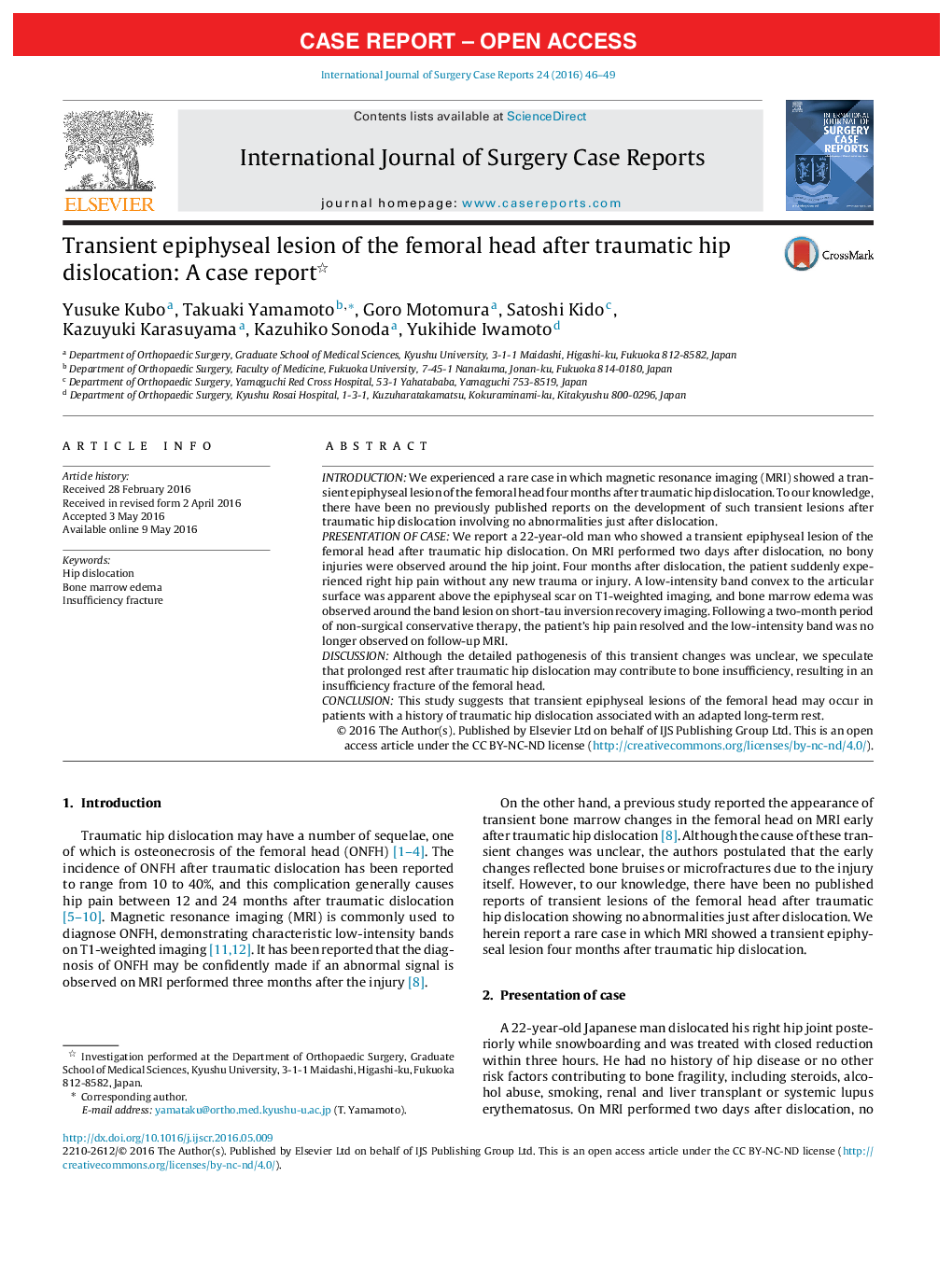| Article ID | Journal | Published Year | Pages | File Type |
|---|---|---|---|---|
| 4288240 | International Journal of Surgery Case Reports | 2016 | 4 Pages |
•We report a transient epiphyseal lesion of femoral head after hip dislocation.•On MRI performed two days after dislocation, no bony injuries were observed.•Hip pain and a transient epiphyseal lesion appeared four months after dislocation.•Hip pain and a transient lesion disappeared after two-month conservative therapy.•Prolonged rest after the injury may contribute to an insufficiency fracture.
IntroductionWe experienced a rare case in which magnetic resonance imaging (MRI) showed a transient epiphyseal lesion of the femoral head four months after traumatic hip dislocation. To our knowledge, there have been no previously published reports on the development of such transient lesions after traumatic hip dislocation involving no abnormalities just after dislocation.Presentation of caseWe report a 22-year-old man who showed a transient epiphyseal lesion of the femoral head after traumatic hip dislocation. On MRI performed two days after dislocation, no bony injuries were observed around the hip joint. Four months after dislocation, the patient suddenly experienced right hip pain without any new trauma or injury. A low-intensity band convex to the articular surface was apparent above the epiphyseal scar on T1-weighted imaging, and bone marrow edema was observed around the band lesion on short-tau inversion recovery imaging. Following a two-month period of non-surgical conservative therapy, the patient’s hip pain resolved and the low-intensity band was no longer observed on follow-up MRI.DiscussionAlthough the detailed pathogenesis of this transient changes was unclear, we speculate that prolonged rest after traumatic hip dislocation may contribute to bone insufficiency, resulting in an insufficiency fracture of the femoral head.ConclusionThis study suggests that transient epiphyseal lesions of the femoral head may occur in patients with a history of traumatic hip dislocation associated with an adapted long-term rest.
